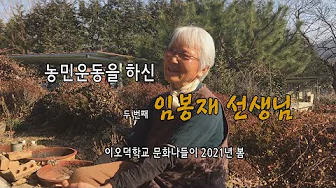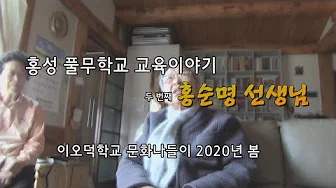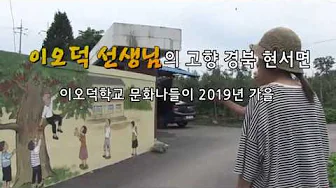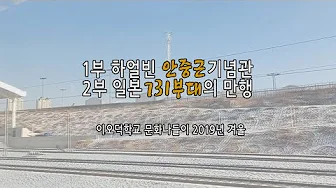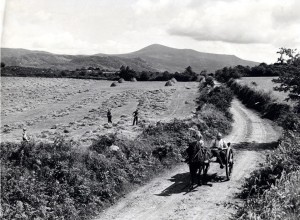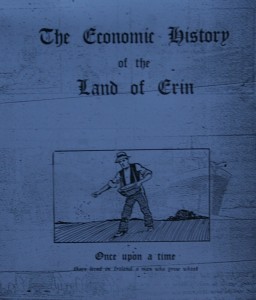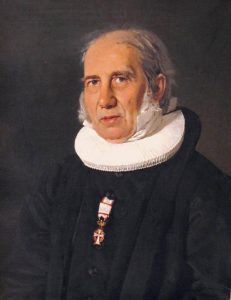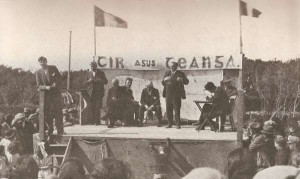"더이상 토양이 못 버틴다"
, 지속 가능한 농업을 위한 목소리 '보존 농업'
더농부 4만 팔로워
2020.06.24.
5,152 읽음
기술 발전과 함께 농업은 ‘생산성 증대'라는 목표를 향해 달려왔다. 이를 위해 단일 작물 재배, 기계화, 화학 살충제와 비료, 생명공학 등 가능한 모든 방법을 동원했다. 하지만 환경 위기에 대한 문제의식이 커지면서 이 같은 농업 형태의 부작용을 우려하는 목소리가 커지고 있다. 토양 침식과 황폐화를 가져와 장기적으로는 오히려 생산성이 떨어질 수 있다는 것이다. 단일 작물 집약적인 현재 방식이 기상이변이나 해충 등에 취약하다는 점도 문제점으로 꼽힌다.
보존 농업이란... 지속 가능한 농업 위해 '건강한 토양' 추구
이해를 돕기 위한 사진입니다 @게티이미지뱅크
대안으로 주목받고 있는 것이 ‘보존 농업(Conservation Agriculture)’이다. 보존 농업은 지속 가능한 농업을 위해 ‘건강한 토양’에 집중한다. 유엔 식량농업기구(FAO)는 보존 농업을 장려하면서 3가지 기본 원칙을 제시하고 있다. 토양 훼손을 막기 위한 "경운 기계 사용 최소화와 토양 유기체 덮개 유지, 그리고 생물 다양성 유지"다.
보존 농업 3가지 기본 원칙 @FAO <Conservation Agriculture>
3가지 원칙은 다음과 같은 방법들로 행해진다.
'경운 기계 사용 최소화'를 위해 '직접 파종(직파)'과 '무경운(no-tillage)' 방식을 사용한다. '무경운 재배'는 농업 포장작업에서 경운, 정지 과정을 생략하는 재배 방식이다. 수확물 잔재를 포장 전면에 그대로 남겨두기 때문에 '간이 경운 재배'라고도 부른다. 미국 농무부(USDA)는 무경운 재배법을 경제적인 면에서 가장 유효한 토양침식 방지책으로 꼽기도 했다.
'유기체 덮개'는 기존 농업 방식과 보존 농업의 가장 큰 차이점으로 꼽힌다. 작물 부산물, 나뭇가지 등의식물성 재료로 이뤄진 덮개로 겉흙을 덮는 것을 말한다. 덮개는 잡초를 억제하고 기후 변화의 영향으로부터 토양을 보호해 준다. FAO는 보존 농업의 경우, 유기체 덮개가 경작지의 30% 이상을 덮어야 한다고
설명하고 있다. 유기체 덮개는 토양 유기물질을 풍부하게 만들어 각종 생물들이 모이도록 해 '생물 다양성유지'에도 기여한다.
'생물 다양성 유지'는 유기체 덮개 외에도 3개 이상의 다양한 작물을 포함한 윤작을 통해 이뤄진다. 기존농업은 생산성 극대화를 위해 단일 작물을 기르는 경우가 많다. 이와 달리 보존 농업은 윤작을 행한다. 이를 통해 특정 병해충에 치명적이지 않도록 방지한다. 또한 다양한 작물들을 함께 기름으로써 생물 다양성을 보존한다.
보존 농업의 장점... 환경 보호하며 생산성도 증진
FAO는 보존 농업의 장점을 크게 3가지 측면으로 나눠 설명한다.
먼저 '환경적 장점'이다. 토양을 보호해 농업을 더 지속 가능하게 만든다. 토양 침식을 줄이고 수질 개선과 대기질 개선을 가져온다. 생물 다양성을 증진시키는 데 도움을 준다. 토양 표면의 유기물 덮개가 강우와 바람의 위력을 분산시켜 토양 침식을 막는다. 온실가스 배출을 줄이는 데 도움을 준다. 유기물질들이 토양 내부까지 축적되면 탄소가 대기로 빠져나가는 것을 막기 때문이다. 또한, 다양한 생물종들에게 거주지를 제공한다. 이를 통해 해충을 잡아먹는 새, 다른 동물들을 끌어들여 생물 다양성 보존에 기여한다.
두 번째는 '경제적 장점'이다. 장기적으로 3가지 측면에서 생산 효율성을 증대시킨다. 시간 절약과 노동요구량 감소, 그리고 비용 감소다. 무경운 방식을 사용하기 때문에 토지 개간과 파종 등 노동 수요가 가장 큰 작업에 드는 시간과 노동이 절약된다. 또한 경운 기계 운용비와 연료 사용이 줄어든다. 기계 유지 비용도 절약된다. 장기적으로 토양에 유기물질이 풍부해져 비료 사용량도 줄어든다.
세 번째는 '토양 생산성 증진'이다. 보존 농업은 낮은 생산성이 아닌 지속 가능한 방식으로 생산성 증진을 추구한다. 보존 농업을 도입한 사례를 살펴보면 장기적으로 생산성이 상승하는 경향을 보였다고 한다. 또 한 생산량의 변동성이 줄어들었다. 그 이유는 유기물 덮개 사용에 있다. 유기물 덮개를 사용하면 토양 유기물질이 증가한다. 이를 통해 토양 내 수분 보존량과 영양분이 증가해 생산성이 증가한다. 유기물질들을 통해 친환경 비료의 효율, 수분 수용량, 뿌리의 환경이 개선되기 때문이다.
FAO에 따르면 멕시코에서 옥수수와 콩을 윤작했더니 토양 유기물과 질소 축적을 촉진시켰다. 그 결과 옥수수 수확량이 25% 늘었다. 또한 무경운 농법은 6~10%까지 밀 수확량을 늘리는 데 기여했다. 노동 시간과 연료 등 트랙터 사용에 따른 비용도 크게 절감시켰다. 인도-갠지스 평원(Indo-Gangetic Plains)의 경우, 무경운 농법의 도입으로 밀 생산에서 농부의 비용을 1ha(헥타르) 당 20%까지 감소시켰다. 그 결과 농부의 소득은 28%까지 증가했다.
'지속 가능성'이라는 화두 농업에 던져... 생산성 부족하다는 지적도
이해를 돕기 위한 사진입니다 @게티이미지뱅크
물론 보존 농업이 만능은 아니다. 기존 농업 방식에 비해 작물 생산량은 줄어들고 더 많은 토지를 필요로 하게 될 것이라는 우려 섞인 목소리도 있다. 모든 농업이 보존 농업의 형태로 이뤄진다면 2030년이면 80억을 넘길 것으로 예상되는 인류에게 식량난을 초래할 것이라는 비판적인 전망도 있다. 보존 농업 지지자들은 지속 가능한 농업을 통해 생산성이 증진된 사례를 들며 이에 대해 반박하고 있다.
논쟁은 있지만 보존 농업이 농업에 던지는 화두는 명확하다. 이상 기후 등 환경 문제가 눈앞에 닥친 상황에서 농업도 지속 가능한 길로 나가야 한다는 것이다. FAO는 "보존 농업을 시작하고자 한다면 달성 가능한 목표에 집중하라, 먼저 경작지 일부에서 시작해 경험을 쌓으라"고 조언한다. FAO가 강조한 '달성 가능
한 목표'와 '작은 부분부터 시작하기'에 농업 분야 종사자만이 아니라, 지속 가능한 지구를 위해 노력해야 할 우리 모두가 귀 기울여야 하지 않을까.
FARM 인턴 이주현
제작 총괄 : FARM 에디터 이지훈
nong-up@naver.com
더농부
참고=
FAO, <Save and Grow>, <Conservation Agriculture>
FAO 홈페이지, <Benefits of CA>, <Principles of CA>, <Why we do it>
농사로 홈페이지, <작목기술정보 - 콩 -재배·생리 -무경운 재배>
National Geographic, <Reference : Sustainable Agriculture>
International Journal of Environmental Studies, <Global spread of Conservation Agriculture>
#더농부 #해외농업이야기 #지속가능한 #농업 #보존농업 #무경운재배 #유기물덮개 #윤작
베란다 텃밭에서 스마트팜까지, 네이버 FARM판 공
식포스트 '더농부' 입니다. 농업과 농어촌 속 다채…
팔로우
4만 팔로워
시리즈 해외 농업 이야기
61 세계 최대 맥주회사, AB인베브가 농업에 적극적으로 투자하는 이유는
60 늙어가는 '일본 농촌', '스마트 농업'서 해법 찾는다!
59 "더이상 토양이 못 버틴다", 지속 가능한 농업을 위한 목소리 '보존 농업'
58 사막에 꽃피운다, 미래의 첨단산업 아그리테크(AgriTech)로 달려가는 세계
57 농업용 드론 판매 급증, 온라인 유통 확산… 코로나가 앞당긴 글로벌 농업 혁신
더보기
댓글 4
21 4
철난농부
전 현장의 농부로써 논리는 좋지만 현실은 동떨어진 얘기라고 봅니다. 경운기 트렉터없이 얼마나 노동력을 통해 경작할 수 있나요, 토양은 좋아질지모르지만 농부의 허리는 휘고 끊어집니다. 문제는 농산물의 가격입니다. 대량생산없이 소규모농업 ㅡ 즉 내몸이 고생하여 일군 노력의 산물이 제값을 받을 수 있느냐의 문제죠.
농사는 답이 없습니다. 그래서 소농들이 대량생산을 위해 기계를 의존할 수 밖에 없는 구조가 되는 겁니디ㅡ.
2020-12-30 08:46 신고
---
서윤
포스팅 잘 읽었습니다~~! 혹시 이 글을 가지고 카드뉴스 제작해도 될까요~? 영리적 사용이 아닌 대학교 동아리 활
동으로 블로그에 기재만 하려고 합니다. 혹시 출처 남기고 주제로 써도 되는지 여쭤봐요
2020-06-27 23:20 신고
===
heo_****
좋은 포스팅 감사히 잘 읽었습니다 ^^ 보존농업을 통해서 우리 인류가 미래시대에 식량위기라는 비전통적 안보 위험에서 자유로워지고 모든 이가 기아와 빈곤이라는 재앙으로부터 성공적이고 안전하게 보호되어졌으면 하는 바람을 세계시민으로서 적고 갑니다. 다시 한 번 유익하고 좋은 포스팅 감사히 잘 읽고 갑니다. 아울러 9월에 코엑스에
서 열릴 더농부 귀농박람회도 성공적으로 잘 진행되기를 바라겠습니다. 더농부 구성원들의 행복과 건강 그리고 평화를 기원합니다.
2020-06-26 21:50 신고
===
Kor Mighty Mouse
와아. 더농부에서 '보존농업'을 다뤄주셨네요. 개도국은 말할 것도 없고, 미국같은 선진국(노스다코다 주를 비롯해)의 대규모 경작지에도 유용하다고, 계속 확산되고 있습니다. 국내 보존농업 포스팅은 거의 최초일 것 같은데, 깔끔한 정리 고맙습니다. 참고자료 목록을 보니 이주현 인턴님 수고많이 하셨겠네요. 😊
2020-06-25 14:16 신고
보존 농업이란?
CA라고도하는 보존 농업은 토양 건강을 보장하고 지속 가능한 농업을 촉진하며 토지의 과도한 사용을 방지하기위한 농업 형태입니다. 21 세기에 인기를 얻은 보존 농업은 지속 가능한 재배 방법을 유지함으로써 농부들이 땅을 건강하고 생산적으로 유지하도록 돕는 것을 목표로합니다. 보존 농업을 통해 토지의 건강과 지속적인 비옥함을 보장하기위한 몇 가지 전략이 있으며, 그 중 다수는 유엔 식량 농업기구의 지침에 요약되어 있습니다.
CA의 중추를 형성하는 가장 중요한 원칙 중 하나는 경작을 억제하여 토양 손상을 줄이는 것입니다. 경작 과정에서 씨앗을 심을 때 표면에 영양분을 공급하기 위해 토양을 손이나 기계로 뒤집습니다. 단기적으로 이것은 현재 농작물에 도움이 될 수 있지만, 많은 과학자들은 그것이 토양의 장기적인 분해로 이어지고 결국에는 사용할 수 없게한다고 제안합니다. 경작을 자제함으로써, 작물 조각이 토양 위에 보호 뿌리 덮개를 형성함에 따라 유기 토양 물질이 실제로 유리할 수있다.
보존 농업의 두 번째 주요 요인은 표지 작물 심기입니다. 가능한 경우,이 작물은 바람, 태양 및 비로부터 상부 토양을 보호하여 토양 침식을 방지합니다. 덮개 작물은 또한 토양의 유기체에 영양분을 공급하여 작물에 공급합니다. CA에 관한 UN 지침은 상업적 농작물에 농약의 일부 적용이 필요할 수 있음을 인정하지만, 농부는 토양과 지역 환경의 자연 생물 다양성을 보호하기 위해 제초제 사용을 최소화하는 것이 좋습니다. 토양을 보호하고 건강하고 번성하는 바이오 시스템을 확보함으로써 많은 전문가들은 작물이 번성 할 가능성이 높다고 생각합니다.
유엔 보존 농업에 관한 UN 지침에 의해 선전 된 세 번째 원칙은 작물의 회전에 관한 것이다. 같은 작물로 같은 땅을 반복적으로 심으면 토양에 영양분이 고갈 될 수 있습니다. 같은 필드를 통해 다른 영양소가 필요한 작물을 순환시킴으로써 토양은 영양소를 쉬고 보충 할 시간이 있습니다.
일부 CA 조직은 또한 자연 생태계의 성장을 장려하기 위해 토지 일부를 예약하는 것을 장려합니다. 농경지가없는 땅을 유지함으로써 주변 농지에는 야생 동물, 곤충 및 토착 식물의 균형이 적절할 것입니다. 많은 경우에 토지를 절약하는 것이 실질적인 옵션이 아닐 수도 있지만, 일부 전문가들은 자연 보호 구역과 같은 적절한 보존 노력이 농업 운영을 환경 파괴에서 환경 인식으로 전환하는 데 도움이 될 것이라고 제안합니다.
